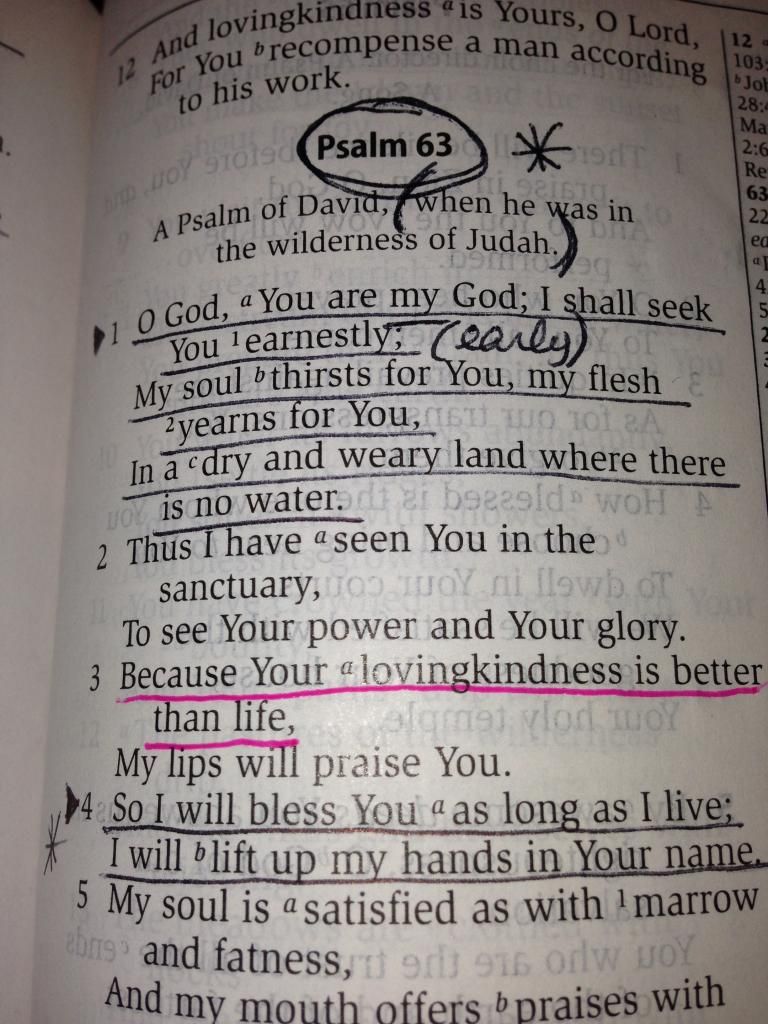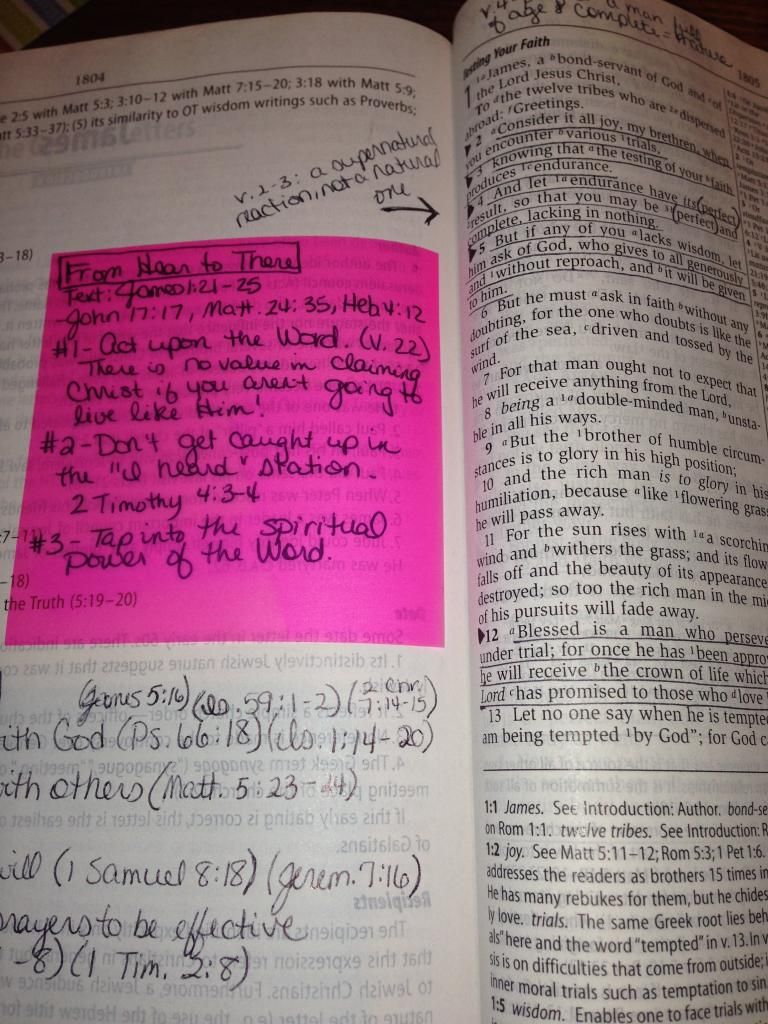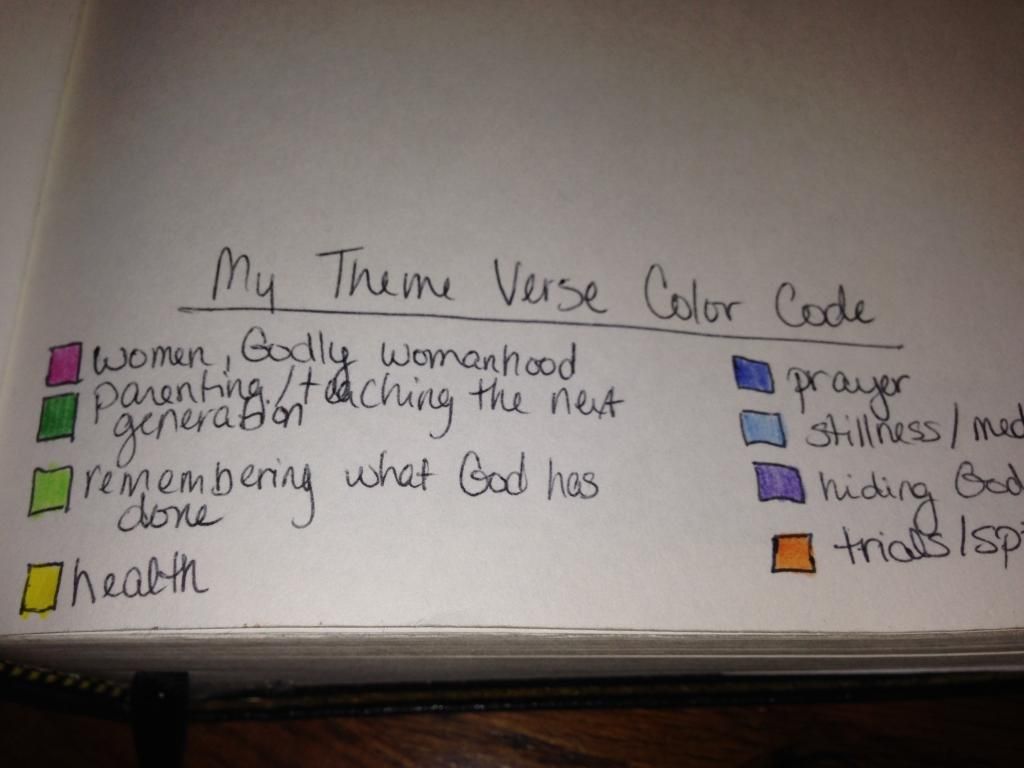My Bible looks pretty rough these days. I've glued Genesis back in a couple of times. Papers are tucked into the back. Colored pencil marks, thoughts from sermons and Bible studies, and sticky notes fill the pages. One page in Ephesians even has tape on it. The page ripped, and a wide piece of clear tape was the only way to repair it. My Bible may not be "pretty" but it's a record of my life over the past twelve years, with the ups and downs, the heartaches and the triumphs, nothing held back.
A lot of people are reluctant to mark in their Bibles. They don't want to mar the pages, or maybe they see it as disrespectful. But I see it as an essential part of Bible study. Marking my Bible helps me connect with the truths it contains. It also serves as a concrete reminder of the faith that shapes my life - something my children and even grandchildren can hold onto one day when I'm gone.
I don't have a set-in-stone system for how I mark my Bible. It's evolved over the years and will probably change more as time goes by. There are several things I do:
1. Underlining verses
Have you ever read a verse that just seemed to jump off the page at you? What about a moment when God seems to speak directly to you through a verse or passage you're reading? When I have those "aha" moments, I grab a pen and underline it. Sometimes I'll add other symbols (like inductive study marks) or notes to the side. Other times, it's a simple underline, just enough to catch my eye the next time I read through.
2. Inductive Bible study
I'm a visual learner. When I'm learning something new, I need to see it and try it for myself until I learn. The first time I heard of inductive Bible study, I knew it was just what I needed.
Kay Arthur is the most amazing teacher. Her website is full of free information to help you get started, including an introduction to inductive study. I also highly recommend her books. Inductive study can seem a little overwhelming at first, so if you want to check it out, start small. Choose a short book - Ephesians is a great one - and work through it.
3. Notes in the margins
I was flipping through Psalms as I wrote this post, and I stumbled across notes I'd taken on Psalm 91. I dated it November 17, 2010, with the note "the day I found out about (a family member)." It was a personal situation that shook me to the core. The message my husband preached that night was called "Living in the Secret Place." It was a message full of God's promises - His refuge, His protection, His love. It was exactly what my aching heart needed that night, and it was proof that God heard my cries. He heard them before I even cried out - before I knew what was happening. Those notes are precious to me.
I have a lot of sermon notes in my Bible. A sermon can bring out exactly what I need to hear, or I may find a nugget that I want to study more. See-through Post-It notes are perfect for this!
4. Theme verses
In the front of my Bible, I have a color code for a few key areas. These are the big themes I'm passionate about: prayer, hiding God's Word, remembering what God has done and handing our faith down to the next generation. When I come across a verse that fits into one of those categories, I'll mark the verse number with the corresponding color.
Do you mark in your Bible? Do you use a certain Bible for it and keep a separate one for church, or do you use the same Bible for everything?





Lovely! I used to write in my Bible, and then I got a nice "fancy" Bible, and haven't marked in it much since. I like the post it idea though!
ReplyDelete